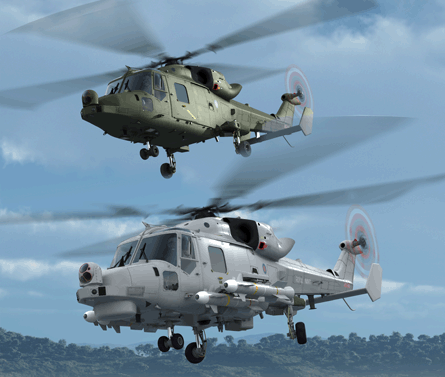With the British armed forces' first Lynx Wildcat utility helicopter to make its debut flight on 13 November, AgustaWestland is looking to secure its first export sale for the newly rebranded AW159.
Formerly referred to as the Future Lynx, the new aircraft will be delivered to the British Army and Royal Navy between March 2012 and 2016 under a combined production deal for 34 and 28 helicopters each.
Commonality between the service variants is now expected to reach around 98% in airframe and systems, says David Hillcoat, AgustaWestland's head of Lynx. "We've moved very much to a common aircraft which can be re-roled," he adds.
 |
|---|
© AgustaWestland |
Despite having come perilously close to being cancelled last year, the Wildcat programme remains on time and on budget, says AgustaWestland managing director Graham Cole. "If you ever wanted to test a relationship it was 2008 and Future Lynx, but we got through it," he adds.
The new type is due to achieve initial operational capability with the army in January 2014 and the navy 12 months later, with the fleet planned to be jointly based at RNAS Yeovilton in Somerset. The site will also house logistics support and training infrastructure for the type, with AgustaWestland having recently been selected to deliver the latter service.
Three Wildcats will be used to perform around 650 flight hours of development testing, with GKN Aerostructures to deliver the second airframe in the near future. The design's Thales-supplied core avionics are now undergoing trial using an integration rig, while its new tail rotor has completed around 15h of flight testing and will soon enter production.
Potential export customers for the AW159 are believed to include Denmark, Indonesia and South Korea, with representatives from the first two nations having attended a naming ceremony for the type in Yeovil on 24 April.
Source: Flight International
















